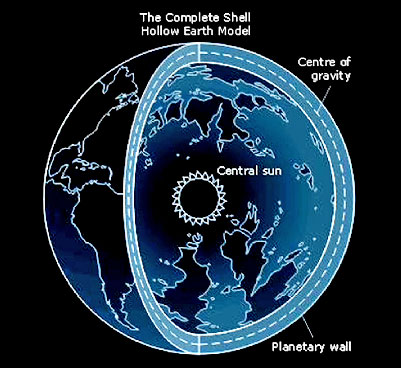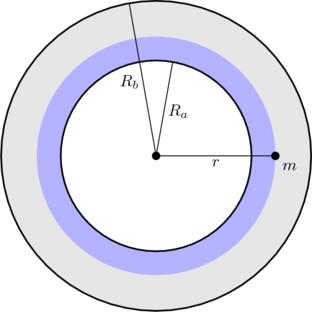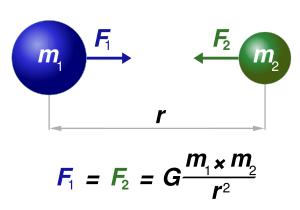|

2011
from
NPIEE Website
The North Pole Inner Earth Expedition is the Greatest Expedition in
the History of the World!
We strongly believe that the films made from this venture will more
than pay for the expenses to conduct it. We get one chance and one
chance only. There is only one ship left that can make this journey,
and it retires in 2012. The science is real.
The story is more than
5,000 years old.
The legend says that at a certain place above the
Arctic Circle, there exists an oceanic depression or an entrance
into the Earth. It's a place where the legend claims sea level isn't
level anymore.
The discovery that
the earth is hollow would forever shatter our
long-held beliefs about how planets are formed.
More importantly,
however, discovering life beneath the earth's crust could
potentially provide us with new tools that would allow life on the
surface to regain environmental balance, harmony, and possibly even
peace.
These prospects make the North Pole Inner Earth Expedition
the greatest expedition in the history of the world.
The North Pole Inner Earth Expedition is by far the most innovative
and courageous exploration effort in modern times. We are unable to
go to the Moon. We are decades away from manned exploration to Mars.
This Expedition to the North Pole region is possible and within
reach.
There has never been a more exciting or appropriate time to visit
this region of the Earth. The science is ready. The documentary film
viewing public is ready. The mission is extraordinary enough to
dominate documentary content for a strong feature release and bold
enough to make history.
We want the public to participate. We want all the data to be freely
released. The expedition and production need support from those who
can see the vision.
With a proven global marketplace as already evidenced by 17 million
Japanese viewers, the Galileo Award, many millions of online hits,
and low production cost, visionary investors may see solid financial
return on their investment as well as films that they can be proud
to see their names on. More people may know about the Inner Earth
than knew about Middle Earth prior to the films being released.
We invite you to explore this site to learn more about the science
behind the journey that brought the hollow earth to our attention,
and how you can be a part of this incredible expedition. We'd love
to hear from you with any questions or feedback you may have.
The North Pole Inner Earth Expedition (NPIEE) is a project of the
Phoenix Science Foundation.
Expedition
The Yamal was retired in 2008. The Captain Kalibnikov is the only
civilian ship remaining in the world that can make this voyage. It
is 450 feet long, weighs 23,000 tons, and has a 4 ½ year fuel
supply. It is capable of carrying 100 passengers.
It also has a
helicopter and a small boat used for forward exploration and for
sampling the sea and ice.
The Yamal is the key to success for
equipment to reach and successfully study the arctic regions. The
team is going to be well housed on this ship for the 14-day charter.
No diesel craft can make this journey. We need at least 5 days on
location to take the measurements necessary to make the project a
success.
As a scientific expedition, we will spend our time sampling and
testing the organic, biological elements on and under the ice.
Items
that we will examine include:
Sea Water Analysis
pH - using a precision pH Meter
Density
Boiling and freezing temperatures
Metal Content through Gas Chromatography
Salinity using a precision Salinity Meter
Crystal formation - Using a Cold Room Microscope Lab
Ice Analysis
Core examination for
sediments and pollen
Density
Freezing Temperature - Using a Precision Meltemp
Iridium
Salts and microorganisms
Marine Life
Plankton
Fish
Sea Birds
Whales
Dolphins
Polar Bears
Sea Lions and seals
Undersea photography
Under-ice photography
Aurora Borealis Examination
Spectrographic analysis
Origin
Pattern analysis
Duration and flow
Magnetism
Earth Magnetism
Magnetometer readings to
locate magnetic anomalies
Magnetic eddies and disturbances
Infrared Photography
Heat sources under the
sea
Heat sources under the ice
Heat sources in the sky
Flying or sub-surface craft that may be not visible to the
naked eye
Sea Floor Geology
Core sample on the ocean
floor
Depth and morphology mapping
Sonar mapping using single and dual source sonar
Oceanic Depression Measurement
Using a precision
gyroscope, the curvature of the Earth will be mapped
Sea depression halo will be located
Arc of the depression will be mapped by sea
Using the arc, the circumference will be calculated
Using the circumference, the diameter will be calculated
Using the diameter, the center will be calculated
At the center of the depression, the search for a crustal
opening will begin
History
The North Pole Inner Earth Expedition is the Greatest Expedition in
the History of the World.
In 2001, the research program began. The seismological data was
reviewed. The history was studied. The astronomy and satellite data
was scrutinized. The personal testimony of dozens of explorers was
gathered and analyzed. The physics of the current structure of the
Earth was calculated and recalculated.
At the end of the study, there was still not enough data to disprove
the theory that the Earth might be hollow. In fact, the evidence
that the Earth might be hollow became so numerous, that planning for
an expedition to the Arctic region as a process for proof of the
hypothesis became necessary. The work to assemble a science team
began in 2004.
By 2005 the plans for an expedition using the Russian
nuclear powered icebreaker were formulated. Steven Currey
Expeditions headed the team and began collecting scientists and
engineers from around the world.
By 2005, the team had grown to 22 members, but required 100 members
to fund the voyage. In 2006, Steven Currey tragically passed away
and was succeeded by launch manager and PhD Physicist, Brooks Agnew.
Dr. Agnew’s great, great grandfather is the Scottish explorer
credited with the discovery of the Magnetic North Pole. Dr. Agnew is
continuing the family tradition of Arctic exploration by searching
for the North Pole Inner Earth opening to the core.
Planning was changed as all the funds collected at that time were
refunded to all the original participants.
The expedition theme was
established to feature five documentary films dedicated to
enlightening the world to the nature of Planet Earth and the
potential of mankind’s stewardship.
Science
The North Pole Inner Earth Expedition is the Greatest Expedition in
the History of the World.
It is strongly believed that the scientific data collected on this
Expedition will be invaluable to understanding the true structure of
the Earth. If the oceanic depression can be located and measured, it
will be the geological discovery of the millennia. If the Aurora
Borealis can be affirmed to originate from the inner Earth, the
entire field of planetary physics may be rewritten.
If the Earth can
be proven to be hollow, the Expedition may be the most profound
discovery since the Earth was discovered to revolve around the sun.
Not only are these scientific discoveries possible, but they are
demanded by tens of millions of enthusiasts who have been supporting
this Expedition with their letters, votes, voices, and purchases of
conferences, books and films on the subject.
This is by far the most
exciting Expedition ever attempted on Earth.
What the Science Says
Geologists have been aided by Internet linking of seismographic
accelerometers to conduct a CAT Scan of the Earth each time there is
an earthquake.
Of course, like most modern scientists, they mold the
data to fit their current paradigm. The more than 600,000
seismograms have been recently analyzed by Dr. Michael Wysessions
and revealed an entire ocean underneath the Atlantic Ocean.
Jan Lambrecht authored a reanalysis of the seismographic data and
revealed an Earth that looks quite different than the one being
taught to geological students today. One with a hollow core.

3D illustrations of the Earth’s inner
core structure and the texturing of its iron crystals.
The
transparent outer surface is the inner core boundary (at radius 1220
km). The opaque inner sphere is the inner core (slightly less than
half of the inner core radius) found in this study. The sticks
represent the alignments of iron crystals in the outer part of the
inner core. The longer the stick is, the higher the degree of
alignment is and the stronger the seismic anisotropy is. The fast
direction is parallel to the spin axis.
This illustration is a 3D
view. The labels NP and SP stands for the North Pole and the South
Pole, respectively.
The anisotropy at the top 100 km is weak. The
anisotropy at greater depth is stronger in the western part than in
the eastern part. The form of anisotropy in the inner inner core is
different from that in the outer part.
Credit: Illustrations by
Precision Graphics
Geologists at the University of Illinois have confirmed the
discovery of Earth’s inner, innermost core, and have created a
three-dimensional model that describes the seismic anisotropy and
texturing of iron crystals within the inner core.
“For many years, we have been like blind men touching different
parts of an elephant,” said U. of I. geologist Xiaodong Song. “Now,
for the fist time, we have a sense of the entire elephant, and see
what the inner core of Earth really looks like.”
Using both newly acquired data and legacy data collected around the
world, Song and postdoctoral research associate Xinlei Sun
painstakingly probed the shape of Earth’s core.
The researchers
report their findings in a paper accepted for publication in the
journal Earth and Planetary Science Letters.
Composed mainly of iron, Earth’s core consists of a solid inner core
about 2,400 kilometers in diameter and a fluid outer core about
7,000 kilometers in diameter. The inner core plays an important role
in the geodynamo that generates Earth’s magnetic field.
The solid inner core is elastically anisotropic; that is, seismic
waves have different speeds along different directions. The
anisotropy has been found to change with hemisphere and with radius.
In the latest work, Sun and Song describe another anomaly
- a global
structure - found within the inner core.
“To constrain the shape of the inner core anisotropy, we needed a
uniform distribution of seismic waves traveling in all directions
through the core,” Sun said. “Since the seismic waves we studied
were generated by earthquakes, one challenge was acquiring enough
seismic waves recorded at enough stations.”
In their analysis, Sun and Song used a three-dimensional tomography
technique to invert the anisotropy of the inner core.
They
parameterized the anisotropy of the inner core in both radial and
longitudinal directions. The researchers then used a
three-dimensional ray tracing method to trace and retrace the
seismic waves through the inner core iteratively.
What they found was a distinct change in the inner core anisotropy,
clearly marking the presence of an inner inner core with a diameter
of about 1,180 kilometers, slightly less than half the diameter of
the inner core.
The layering of the core is interpreted as different texturing, or
crystalline phase, of iron in the inner core, the researchers say.
“Our results suggest the outer inner core is composed of iron
crystals of a single phase with different degrees of preferred
alignment along Earth’s spin axis,” Sun said.
“The inner inner core
may be composed of a different phase of crystalline iron or have a
different pattern of alignment.”
Although the anisotropy of the inner core was proposed 20 years ago,
“this is the first time we have been able to piece everything
together to create a three-dimensional view,” Song said. “This view
should help us better understand the character, mineral properties
and evolution of Earth’s inner core.”
Source: University of Illinois at Urbana-Champaign
Newton's Theory of Gravity
Newton's theory of gravity inside of spheres has been applied to the
idea that planets form as hollow spheres.
The formula is as follows:

Again, Newton's math assumes that a thick shell body may be
considered as many concentric thin shells.
The force contribution
from each thin shell is:

Again, by assuming uniform body density
considerations (this time for a volume rather than a surface area),
the mass of a thin shell with radius R and thickness dR is:

Therefore,

Further, assuming all of the shells with
R > r have no effect on the observer, the second term drops out:

If, and only if, the density is constant throughout the body, ρ(R) =
ρ, and,


In general, for constant ρ,

The factors
 and
and
 are simply the mass M of each thick shell. are simply the mass M of each thick shell.
Newton's gravity proof, of course, lacks empirical data for large
thick spheres.
The hypothesis that the thin sphere equation, simply
repeated over and over again for each location within the thick
sphere is certainly convenient for mathematicians, but does not
consider the interactions between the mass outside the circumference
of that sphere and the mass inside the circumference of that sphere
where density is not uniform, not where encapsulated,
counter-rotating bodies may be exist concentrically on the interior
of the sphere.
Alignment of the flux and harmonics or dissidence
caused by the potential between the two bodies both complicate the
calculations and may explain why empirical data does not appear to
support the mathematical conclusions.
The mass at the tangent of any
sphere will accelerate toward the center of that sphere, but if not
allowed to do so by the density of that sphere, like a concrete
floor for instance, there is a point load and vectored loads that
extend conically outward from the source of that contact, like a
Christmas tree beneath the object placed onto the floor.
This is
actually the body of forces to be considered in the equation, and
not the area or the circumference of the entire sphere, which
mathematically would cancel all forces to zero.
In fact, with very
large diameters, and very thick layers in the sphere, the forces are
much more linear and are mitigated by the square of the distance the
same way two separate gravitational bodies M1 and M2 in the
equations below:

The mechanisms of Newton's law of universal
gravitation; a point mass m1 attracts another point mass m2 by a
force F2 which is proportional to the product of the two masses and
inversely proportional to the square of the distance (r) between
them.
Regardless of masses or distance, the magnitudes of |F1| and
|F2| will always be equal. G is the gravitational constant. Isaac
Newton's law of universal gravitation is a physical law describing
the gravitational attraction between bodies with mass. That is to
say, the radius (r) is actually the distance between the measurement
point and all points inside the body of the sphere.
Thus, the Mass
(m) in the equation is not vectored, but rather is linear in large
bodies.
This is supported by deep drilling operations, which were
impossible in Newton’s day. This empirical evidence shows that even
after 8 miles into the crust, the weight of the steel hanging from
the Kelly (the brake holding the steel back from collapsing into the
well) increases with each foot let into the hole. If Newton’s
thin-crust theory did hold true for thick-shelled spheres, the steel
should be weightless some distance into the crust.
The evidence
indicates this in not the case. It is empirically available that if
the steel of the drilling operation were cut loose from the rig and
allowed to fall deep into the hole, it would not float like a man in
space, but would crumple irretrievably in the bottom of the deepest
hole imaginable.
Or would it?
If the hole were drilled completely through the thick
crust of the gravitational sphere, into the void of the sphere,
-
Would the drill head float weightless inside the sphere?
-
Or would it
accelerate toward the nearest circumference?
-
Or, upon further
consideration, would it float to the epicenter of the sphere, where
gravity and centrifugal forces are at an absolute minimum?
-
Or, would
it compress in the center, accelerating toward the center of the
crust from the inside and the outside?
Conclusion
The answer is that is has never been attempted, and that currently
there does not appear to be enough technology to test the theory.
It
is proposed that an expedition be mounted to the Arctic Region to
test the theory that gravity inside the Earth cancels the way
Newton's thin-shell sphere formula would denote.
New Hypothesis
Planets form as hollow spheres, rather than as solid balls, and
there is significant gravity on the inside of the crust.
Experiment
Criteria include voyaging to the Arctic Circle to perform the
following:
-
Sample the physical and chemical
properties of the region as all reasonable depths and
altitudes
-
Survey the sea floor for
anomalies and geologies
-
Survey marine life for evidence
of foreign or unique life forms
-
Validate the planet core geology
inasmuch as sampling methods
Updates
April 20, 2011
NPIEE update videos linked to
media section of website as well as You Tube channel. The videos
are from the April 4th, 2011 Coast to Coast AM interview with
Brooks Agnew. Brooks discusses the latest approach to find
funding for the expedition and the limited amount of time to
acquire it in.
March 15, 2011
The new North Pole Inner
Earth Expedition website has launched. We are still searching
for funding for the expedition. We have not given up on the
expedition and neither should humanity!
Related Videos
|






